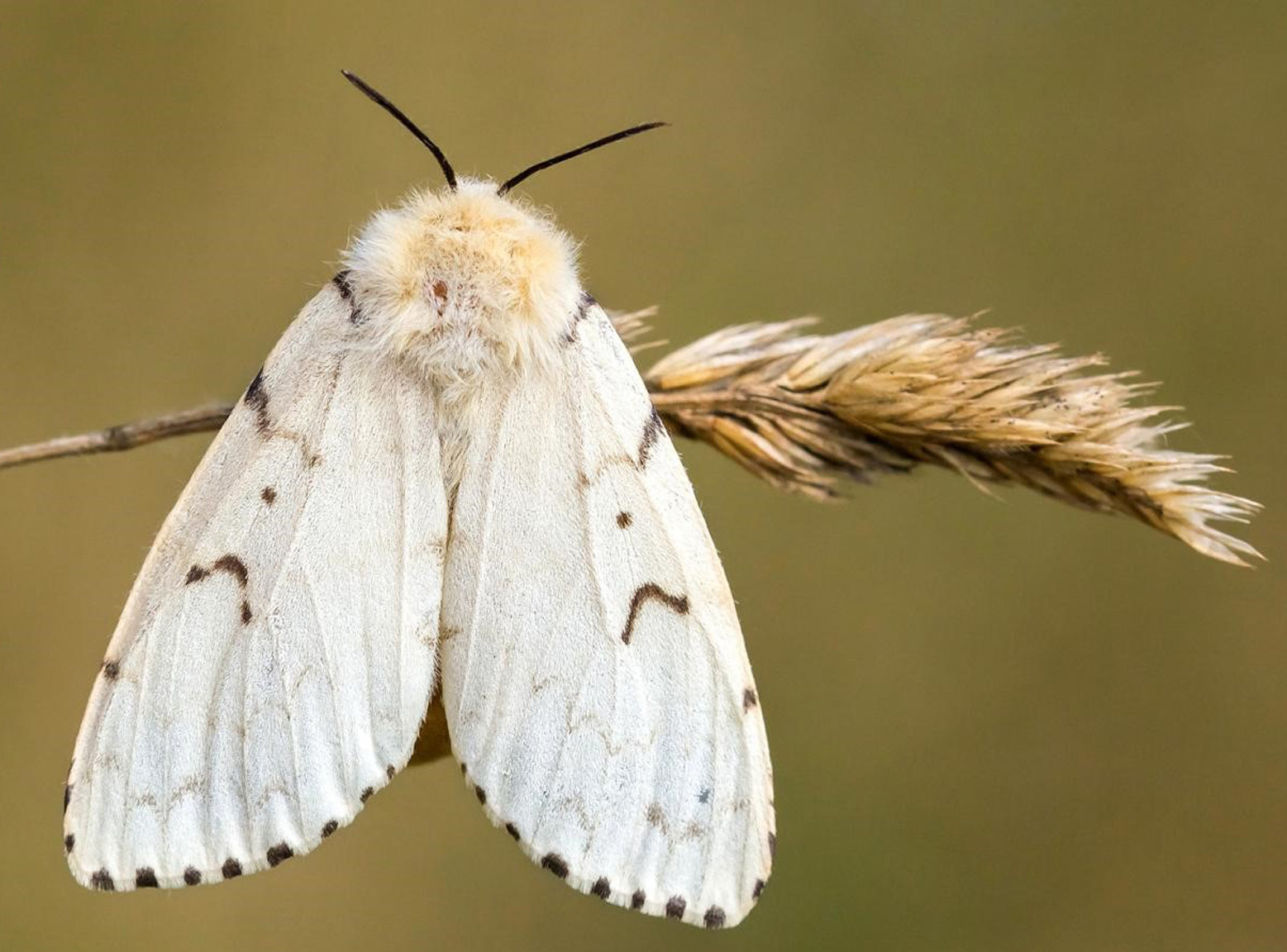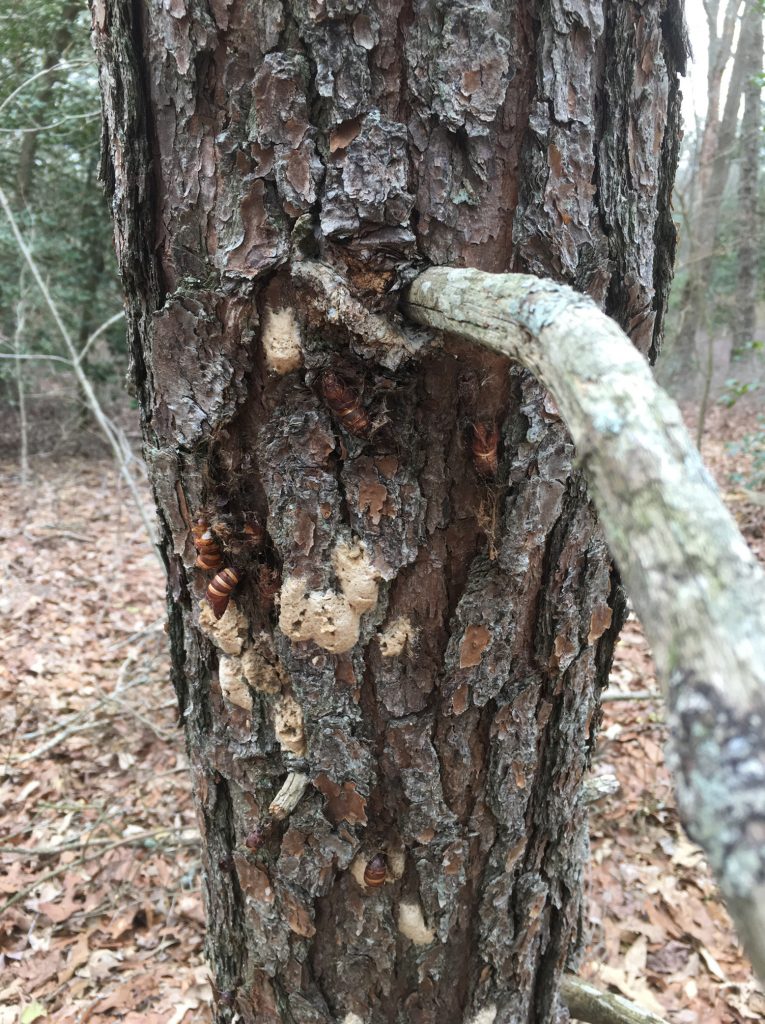Increase in Gypsy Moth Activity Detected For 2022
Forest Service | Sussex County | Date Posted: Tuesday, October 4, 2022
Forest Service | Sussex County | Date Posted: Tuesday, October 4, 2022

DOVER, Del. (October 4, 2022) – The Delaware Forest Service has detected approximately 825 acres of defoliation around the Cypress Swamp, Gumboro, and the Nanticoke Wildlife Area due to gypsy moths, as compared to 2021 with only about 12 acres impacted by this invasive pest.
Trees most threatened from defoliation by the gypsy moth, also known as the spongy moth, are very old or stressed oaks. Though white oaks are the preferred tree, many species of deciduous trees are often partially or fully defoliated. Healthy trees often do not die from one year of defoliation; however, severe defoliation for two continuous years or more is more of a concern for the tree’s health. Evergreen trees are rarely defoliated.

In the Fall, defoliation can be predicted by counting the number of fresh egg masses per acre in your forestland or yard. They can be found on almost any man-made or natural surface exposed outside during the previous June and July, so careful searching is required. Egg masses are the only life stage present in the fall and winter. Fresh egg masses have a yellow-brown color, intact, and firm to the touch. Some egg masses from the previous year will persist with a whiter, bleached color and are filled with holes and tatters. There may be empty pupal cases from the previous summer persisting as well; however, they are not a living part of the insect population at this point. More information on how to predict how much defoliation to expect next May and June, can be found at the Delaware Forest Service – Forest Health page.
Colder and wetter weather will often lead to increased mortality from the Japanese fungus, Entomophaga maimaiga, the natural biological control agent of this invasive pest. Because this fungus is weather dependent, it is difficult to predict if it will cause the population to decrease by Spring 2023.
Landowner control of the gypsy moth can be achieved over the Fall and Winter by removing and destroying egg masses or coating them with certain types of sprays that suffocate the eggs and deliver insecticides. In the Spring, larval development can be stopped with various insecticides. When treating, make sure to use a federally approved product for spongy moths, and make sure to follow the label when applying the product. The most common option for deciduous forests is to aerially spray the young larvae, usually in May, when the leaves of the oak trees have elongated at least an inch, and the larvae are in the first and second stages of growth. The size of aerial sprays in contiguous deciduous forests should be 20 acres or more. Healthy caterpillars from unsprayed adjacent woodlands will drift into smaller areas and cause almost the same amount of damage as if not sprayed. Typically, the decision to aerially spray needs to be made by January, due to the need to contract a spray job with the small number of licensed applicators in Delaware. Forest landowners who suspect they may have enough egg masses per acre to warrant a privately contracted spray may call the Forest Health Specialist at (302) 698-4553 for technical assistance. Currently, the Delaware Department of Agriculture does not have an organized spray program with financial assistance.
For yard trees and smaller woodlots there are numerous options. Control methods can be found by an internet search of “Control of Gypsy Moth”, however, not all web sites have the same level of professional review before they are published. The Delaware Forest Service strongly recommends using a web site created by a University Extension system, or a federal or state government entity.
Visit USDA’s Animal and Plant Health Inspection Service’s Pest Identification page to learn how to identify the gypsy moth in its egg mass, larval, pupal and adult moth stages.
Keep up to date by receiving a daily digest email, around noon, of current news release posts from state agencies on news.delaware.gov.
Here you can subscribe to future news updates.
Forest Service | Sussex County | Date Posted: Tuesday, October 4, 2022

DOVER, Del. (October 4, 2022) – The Delaware Forest Service has detected approximately 825 acres of defoliation around the Cypress Swamp, Gumboro, and the Nanticoke Wildlife Area due to gypsy moths, as compared to 2021 with only about 12 acres impacted by this invasive pest.
Trees most threatened from defoliation by the gypsy moth, also known as the spongy moth, are very old or stressed oaks. Though white oaks are the preferred tree, many species of deciduous trees are often partially or fully defoliated. Healthy trees often do not die from one year of defoliation; however, severe defoliation for two continuous years or more is more of a concern for the tree’s health. Evergreen trees are rarely defoliated.

In the Fall, defoliation can be predicted by counting the number of fresh egg masses per acre in your forestland or yard. They can be found on almost any man-made or natural surface exposed outside during the previous June and July, so careful searching is required. Egg masses are the only life stage present in the fall and winter. Fresh egg masses have a yellow-brown color, intact, and firm to the touch. Some egg masses from the previous year will persist with a whiter, bleached color and are filled with holes and tatters. There may be empty pupal cases from the previous summer persisting as well; however, they are not a living part of the insect population at this point. More information on how to predict how much defoliation to expect next May and June, can be found at the Delaware Forest Service – Forest Health page.
Colder and wetter weather will often lead to increased mortality from the Japanese fungus, Entomophaga maimaiga, the natural biological control agent of this invasive pest. Because this fungus is weather dependent, it is difficult to predict if it will cause the population to decrease by Spring 2023.
Landowner control of the gypsy moth can be achieved over the Fall and Winter by removing and destroying egg masses or coating them with certain types of sprays that suffocate the eggs and deliver insecticides. In the Spring, larval development can be stopped with various insecticides. When treating, make sure to use a federally approved product for spongy moths, and make sure to follow the label when applying the product. The most common option for deciduous forests is to aerially spray the young larvae, usually in May, when the leaves of the oak trees have elongated at least an inch, and the larvae are in the first and second stages of growth. The size of aerial sprays in contiguous deciduous forests should be 20 acres or more. Healthy caterpillars from unsprayed adjacent woodlands will drift into smaller areas and cause almost the same amount of damage as if not sprayed. Typically, the decision to aerially spray needs to be made by January, due to the need to contract a spray job with the small number of licensed applicators in Delaware. Forest landowners who suspect they may have enough egg masses per acre to warrant a privately contracted spray may call the Forest Health Specialist at (302) 698-4553 for technical assistance. Currently, the Delaware Department of Agriculture does not have an organized spray program with financial assistance.
For yard trees and smaller woodlots there are numerous options. Control methods can be found by an internet search of “Control of Gypsy Moth”, however, not all web sites have the same level of professional review before they are published. The Delaware Forest Service strongly recommends using a web site created by a University Extension system, or a federal or state government entity.
Visit USDA’s Animal and Plant Health Inspection Service’s Pest Identification page to learn how to identify the gypsy moth in its egg mass, larval, pupal and adult moth stages.
Keep up to date by receiving a daily digest email, around noon, of current news release posts from state agencies on news.delaware.gov.
Here you can subscribe to future news updates.